Magenta Ain't A Colour
By Liz Elliott
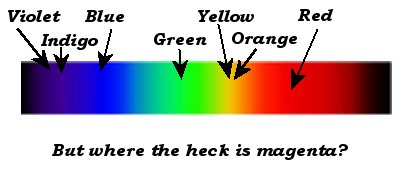
Here’s an experiment you can try: stare at the pink circle below for about one minute, then look over at the blank white space next to the image. What do you see? You should see an afterimage. What colour is it?

The afterimage always shows the colour that is complementary to the colour of the image. Complementary colours are those that are exact opposites in the way the eye perceives them.
It is a common misconception that red is complementary to green. However, if you try the same experiment as above with a red image, you will see a turquoise afterimage, since red is actually complementary to turquoise. Similarly, orange is complementary to blue, and yellow to violet.

All the colours in the
light spectrum have complements that exist within
the spectrum – except green. There seems to be some
kind of imbalance. What is going on? Is green somehow
being discriminated against?
The light spectrum consists
of a range of wavelengths of electromagnetic radiation.
Red light has the longest wavelength; violet the
shortest. The colours in between have wavelengths
between those of red and violet light.
When our eyes see colours,
they are actually detecting the different wavelengths
of the light hitting the retina. Colours are distinguished
by their wavelengths, and the brain processes this
information and produces a visual display that we
experience as colour.
This means that colours
only really exist within the brain – light is indeed
travelling from objects to our eyes, and each object
may well be transmitting/reflecting a different
set of wavelengths of light; but what essentially
defines a ‘colour’ as opposed to a ‘wavelength’
is created within the brain.
If the eye receives
light of more than one wavelength, the colour generated
in the brain is formed from the sum of the input
responses on the retina. For example, if red light
and green light enter the eye at the same time,
the resulting colour produced in the brain is yellow,
the colour halfway between red and green in the
spectrum.
So what does the brain
do when our eyes detect wavelengths from both ends
of the light spectrum at once (i.e. red and violet
light)? Generally speaking, it has two options for
interpreting the input data:
a) Sum the input responses
to produce a colour halfway between red and violet
in the spectrum (which would in this case produce
green – not a very representative colour of a red
and violet mix)
b) Invent a new colour
halfway between red and violet
Magenta is the evidence
that the brain takes option b – it has apparently
constructed a colour to bridge the gap between red
and violet, because such a colour does not exist
in the light spectrum. Magenta has no wavelength
attributed to it, unlike all the other spectrum
colours.
The light spectrum has
a colour missing because it does not feel the need
to ‘close the loop’ in the way that our brains do.
We need colour to make sense of the world, but equally
we need to make sense of colour; even if that means
taking opposite ends of the spectrum and bringing
them together.
Well, now we've got that sorted out, explain
this: stare at the dot in the middle of the image
below - you should see all the colours melt away.
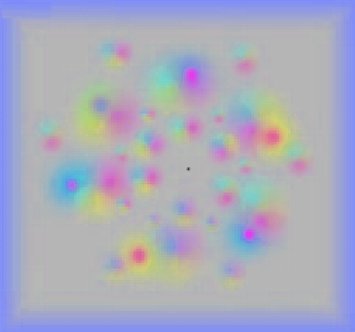
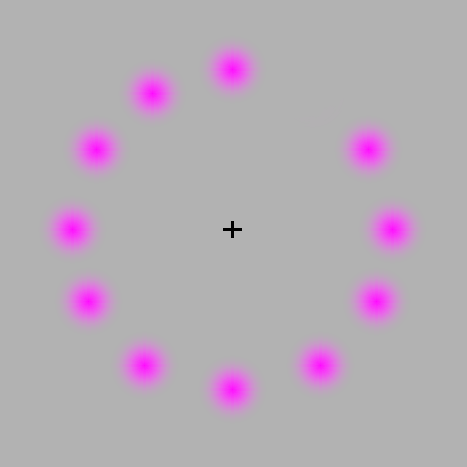
In this optical illusion you can notice a green circling dot, if you fixate your gaze on the cross. The green dot does not exist in the picture proper but is produced by the retina as an afterimage complimentary in color to the magenta dots
-Biotele
A note from Biotele:
It has come to my attention that some readers are confused by Liz Elliot's title of this article. Some readers have debated that magenta is a color, especially important in reflective media like paper. And many printers are based on the CMYK color scheme, where M stands for magenta. It is my opinion that the people debating the title have missed the point of the article.
Magenta is an “extraspectral” color. Sir Isaac Newton noticed that magenta did not exist in the spectrum of colors from white light when he played with prisms. But when he superimposed the red end of the spectrum on to the blue end, he saw the color magenta (this can be done with two prisms to make two spectral spreads, "rainbows"):
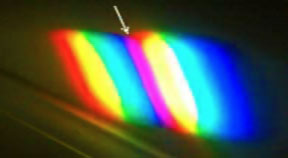
Magenta is the only color that does not exist as a single wavelength of light. Some readers suggested that browns only exist as a mixture of wavelengths. But browns are dark shades of red and yellows and some browns can be generated by a low intensity single wavelength of red. For example 133:0:0 in the RGB scheme is brown (called maroon). Use the color wheel below to explore colors' RGB/Hex values and their respective names.
Click & drag over the Color Wheel to make a color
Your Color
Outer box: Your selected color. Inner box: Actual color of closest match.Thanks to Chirag Mehta.
Brown and green perception are very important in the animal world because they make the contrast between wood, dirt and leaves. So brown is sensed as a different color from red and yellow for evolutionary reasons. In most animals, the eye is also especially sensitive to green for the same reason.
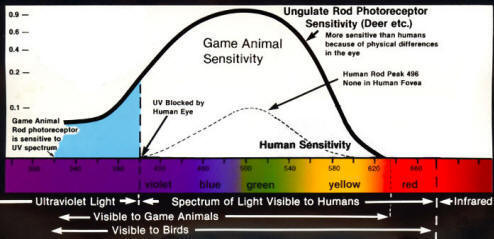
The precise title for Liz Elliot's article could have been "Magenta is not a spectral color", "magenta is not in the rainbow" or "Magenta does not have a wavelength". But the point conveyed by her article is that color perception is not in a one to one correspondence with the physical world. Therefore for those that believe that color represents a wavelength of light then magenta is not a color.
In summary, the representation of colors is solely dependent on the brain and color is only experienced in the mind. Light is colorless and color is a Quale.